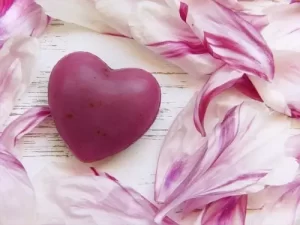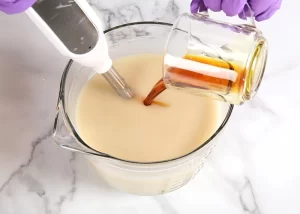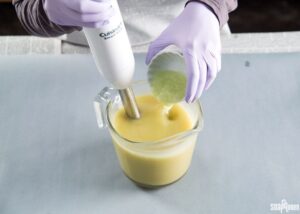Sometimes within a week or less, scents that are put in soap start to fade. Learn How To Add Perfume To Soap? I notice that some smells seem to wane over time while making soap. The worst essential oils are citrus-based. Although I adore a brand-new bar of grapefruit soap, the aroma starts to fade after a few weeks. How To Add Perfume To Soap, then? Any soap will work with this easy method! Continue reading our article to learn:
How To Add Perfume To Soap?
1. Use Fragrance
The list of supplies you’ll need for this project is as follows:
- a soap bar of paper (kraft paper works well here, not newspaper)
- a week of essential oil or fragrance oil in a quart jar with a tight-fitting lid

Put fragrance in the soap.
Start by lightly wrapping the soap in the paper before adding fragrance. If you’d like, you may make more than one bar; just make sure they will all fit in the jar. Sideways in the jar with the soap. You won’t be able to reach all the edges if you place it at the bottom.
On both sides of the paper, apply a few drops of the perfume you want to use. Don’t soak the paper with aroma; the smell doesn’t need to touch the soap. Simply secure the jar’s lid now and leave it alone for a week.
You’ve just given your soap a lingering scent!
When you remove the soap from the jar, it will continue to smell like the oil you used, sometimes even longer. Most soap bars will work with this technique. For fun, try combining two or three smells!
2. Essential Oil vs. Fragrance Oil

The use of fragrance oils vs essential oils to smell soap is a hot topic of discussion among people who make soap. The primary distinction between the two is that one is seen as synthetic while the other is regarded as natural. In the US, fragrance oils are formulations or unique mixtures of chemicals or essential oils that create a distinctive aroma and are subject to FDA protection.
On the other hand, essential oils often only include one component and are derived from plants or other types of vegetation. Essential oils are frequently thought of as being more natural because their constituents are recognized. Although the choice to utilize any material is ultimately yours, you should be aware of the following information.
3. How To Add Perfume To Soap by using Aromatic oils?
Although the extraction method for essential oils may not be natural at all, they are thought to be more natural than other types of oils. So, if one of your motivations for utilizing essential oils is to live more sustainably, make careful to understand how the oil was extracted and confirm that the plant producing the oil is being harvested in a manner that is ecologically friendly. In finished soaps, essential oils contribute a richer aroma that frequently lasts longer. Use some mix of essential oils if you want your soap to fill the room with scent for months while it is merely on display.

Essential oils also have the advantage of being well-known ingredients, which means that it is possible to predict the likelihood of a failed soap batch in advance. Unfortunately, getting your hands on some essential oils might cost an arm and a leg because some plants don’t give much in the way of oil. Effective Essential Oils The following essential oils have a good track record of withstanding the saponification process and retaining their original scent afterward:
- Almond
- Cinnamon (be careful with this one) (be careful with this one)
- Citronella and Cloves
- Eucalyptus and French Lavender
- Jasmine and Orange
- The peppermint patchouli (this can irritate the skin)
- Rose, Sage, and Vanilla
4. How To Add Perfume To Soap by using Liquid Fragrance?
Using a specific tea or coffee as the liquid foundation for your soap is another method to add fragrance to it. Make sure the liquid you create is extremely robust while creating it. The properties of the tea, coffee, or juice, as well as the aroma, are what you’re wanting with this liquid, which is not meant for consumption and would definitely taste awful due to its extreme strength. Both coffee and sage tea, in my experience, generate nice scents. Only that these liquids can alter the pH of the water should be taken into consideration. How your lye breaks down the oil will be affected by this.
The liquid will often start to get more acidic. When you add lye to your water, the resulting reaction will be greater as a result. You will get more comfortable adding scent to your soap as you produce more batches, and you’ll start to think of some amazing, original ideas! Best of luck!
Conclusion:
In order to give you greater confidence to experiment with your own smells as you join the lovely community of soapmakers, I’ve attempted to explain some of the fundamentals of adding fragrance to soap in this post. You essentially have two opportunities to scent your soap. The most typical method is to add pure essential oils or aroma oils to your soap. The addition of various fragrant liquids, such as tea or coffee, is the second approach to fragrance your soap.